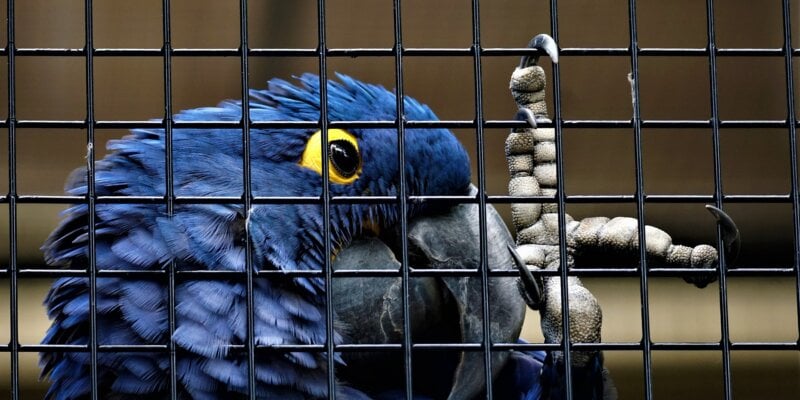Animals in Education and Training
Every year, tens of millions of animals are carved apart in classrooms around the world. Their formaldehyde-preserved bodies are sent to students’ scalpels from various places: foetal piglets are cut out of the wombs of mother pigs killed in slaughterhouses, homeless cats are often rounded up by biological supply houses, and frogs are captured in the wild – a practice that wreaks havoc on local ecosystems. Many other species are also used for classroom exercises, but as many teaching institutions in India and elsewhere know, there are better ways to teach students.
Today’s technology is so advanced that subjecting animals to disturbing dissection and experimentation, which can deter students from pursuing careers in scientific fields, is nothing but cruel and archaic. That’s why educational institutions worldwide are turning to pedagogically superior tools – such as virtual dissection, computer-assisted learning, clinical exercises, and human-patient simulators – instead of animals to train students.
Existing Bans on Animal Dissection and Experimentation
In 2012, the then secretary of Ministry of Environment and Forests issued a landmark directive to the Medical Council of India, the University Grants Commission, and the Pharmacy Council of India mandating an end to animal dissection and experimentation by undergraduate and postgraduate students and promoting the use of superior, non-animal methods of teaching. The ministry recognised that Section 17(2)(d) of The Prevention of Cruelty to Animals Act, 1960, specifically states it must be ensured that “experiments on animals are avoided wherever it is possible to do so; as for example, in medical schools, hospitals, colleges and the like, if other teaching devices such as books, models, films and the like may equally suffice “.
This historic decision led the Dental Council of India to declare a ban on using animals to train undergraduate and postgraduate dental students a year later. In 2014, the University Grants Commission issued a notification banning animal dissection and experimentation (for training purposes) in undergraduate and postgraduate zoology and life sciences courses, and the Pharmacy Council of India ended the use of animals for teaching purposes in both undergraduate and postgraduate courses, too.
The Medical Council of India has banned dissecting and experimenting on animals in undergraduate courses and has restricted the use of certain species (such as cats, dogs, and monkeys) for other training purposes. But disappointingly, some postgraduate curricula still mention the use of animals for classroom exercises.
The Central Board of Secondary Education (CBSE) removed animal dissection from its senior school practical biology syllabus in 2001, instructing the head teachers of all affiliated institutions accordingly. The senior classes were the only ones that had previously been undertaking animal dissection in their practical training.
Humane Education Tools
In order to ensure that students receive the most advanced education possible, educators must use the best teaching tools available – which aren’t animals. Widely available non-animal teaching methods have proved academically superior to and more cost-effective than dissecting or experimenting on animals. Educators love cruelty-free teaching methods because they can customise and repeat exercises to fulfil students’ needs, helping them become proficient and confident without experiencing the distress of mutilating or harming animals.
A few examples of commercially available software suitable for studying animal anatomy and physiology include The Digital Frog 2.5, Tactus Technologies’ three-dimensional V-Frog, Glencoe’s Interactive Dissections for frogs and earthworms, and BioLab programs featuring fish, frogs, transgenic flies, foetal pigs, cats, and invertebrates.
Recently, Designmate, a Gujarat-based company that created the virtual frog dissection app Froggipedia – which Apple named the top iPad app of 2018 – received an award from PETA US. The app enables students to understand several growth stages in frogs as well as other anatomical and physiological characteristics of the species without harming animals.
Human-patient simulators are widely used in medical student training curricula to teach pharmacology, physiology, and critical resuscitation skills, and surgical simulators are leading the way in medical training. Dental students learning about nerves can take advantage of Virtual Physiology’s SimMuscle software instead of hurting animals.















































